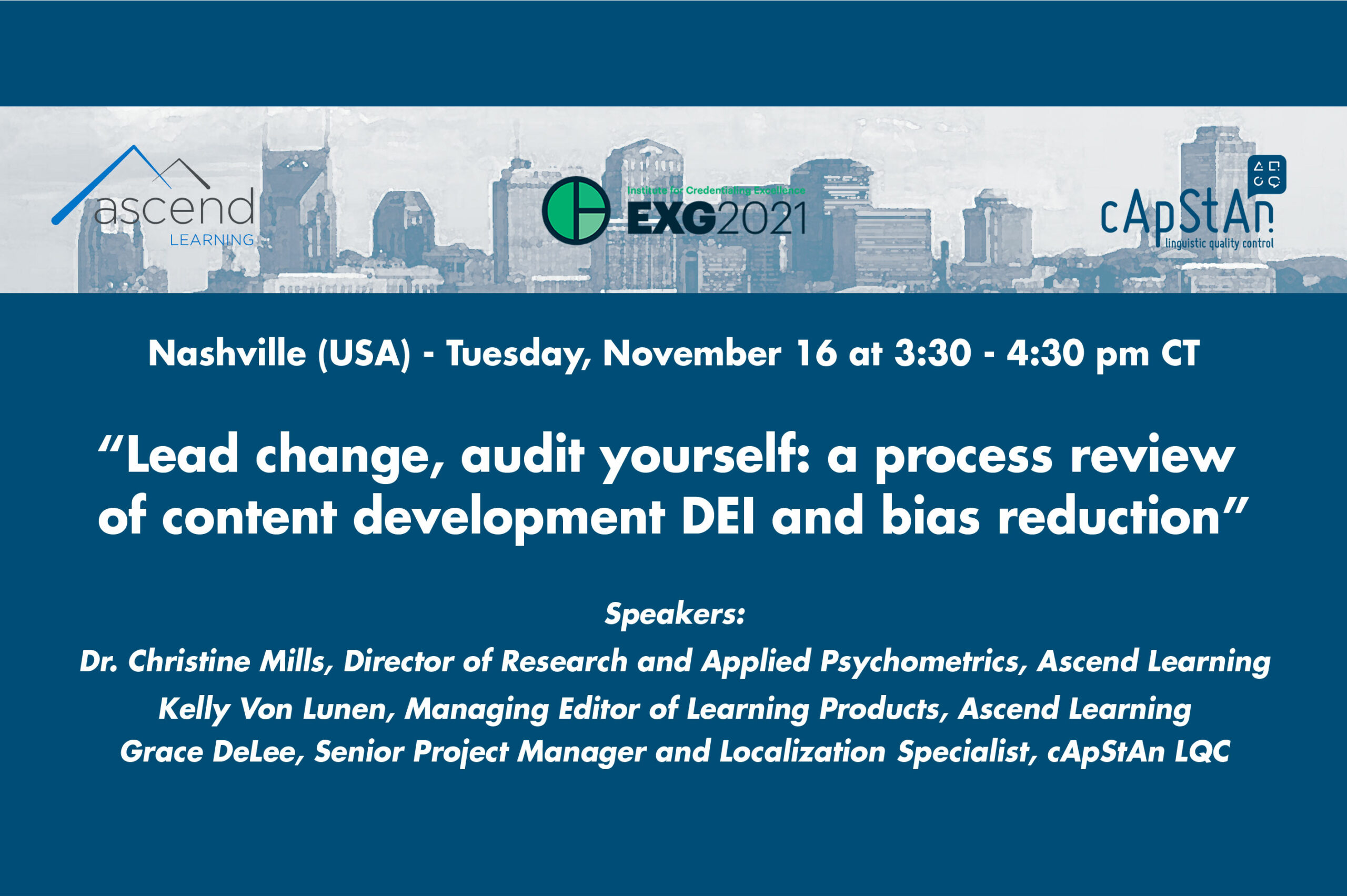
Why diversity, equity and inclusion and bias reduction are important in credentialling: a report from the ICE 2021 conference
by Pisana Ferrari – cApStAn Ambassador to the Global Village
Recent social justice movements across the world have raised awareness, on an unprecented level, of the inequities in our society, and have set off a global cultural debate around the themes of diversity, equity and inclusion and bias reduction (DEI-BR). During one of the sessions at the recent Institute for Credentialing Excellence (ICE)’s annual conference, test sponsors were challenged to take a fresh look at their DEI-BR processes and ask themselves: “How can we do better”? The session in question was aptly titled “Lead change, audit yourself: a process review of content development DEI-BR”. The speakers were Dr. Christine Mills, Director of Research and Applied Psychometrics, and Kelly Von Lunen, Managing Editor of Learning Products, from Ascend, and our own Grace DeLee, Senior Project Manager and Localization Specialist at cApStAn Inc, USA. The joint presentation was aimed at promoting the development and deployment of more effective and proactive DEI-BR processes within the credentialing community. Why is this important for credentialling professionals? The extent to which organizations address DEI in nursing and allied health education, for example, has a direct impact on the cultural competence that students will have as healthcare professionals. Credentialing organizations need to ensure that their assessments will foster professionals who can address the needs of all clients they will encounter.
Example of an DEI-BR audit process
Grace explained that what makes cApStAn’s DEI-BR process different from our other services is that we work directly with the clients to create a bespoke workflow that suits their interests or concerns best, rather than picking suitable pieces from an already established workflow we have. The DEI-BR audit process cApStAn implemented for its review of ASCEND’s bias reduction process consisted of three different phases:
- Phase 1: Preliminary Review and queries for unclear items; preliminary report with follow-up queries for continued feedback
- Phase 2: a two-hour interactive readout with Q&A; review of sample item content and feedback forms; processing feedback into short-, medium-, and long-term goals
- Phase 3: Final report outlining full review process; finalized recommendations and observations; sample templates for updated monitoring
Outcomes and deliverables
Every DEI-BR client will have different outcomes and deliverables, especially since they will have different workflows, as explained above. Following the audit of ASCEND’s bias reduction process, cApStAn made the following recommendations:
- Clarifying how to address within-item instances of bias vs. representation of diversity at a form or item-bank level
- Providing examples of bias in different domains for reviewers e.g., race, ethnicity, culture, religion, sexual orientation, gender identification, disability, education, social class, age, and addiction
- Comment-writing guidance for bias reviewers to ensure that feedback is clear to Test Developers and Subject Matter Experts
- Improved definitions of bias categorization codes (e.g. gender and other stereotyping, ethnocentrism)
Read more about cApStAns DEI-BR consultancy services at this link.